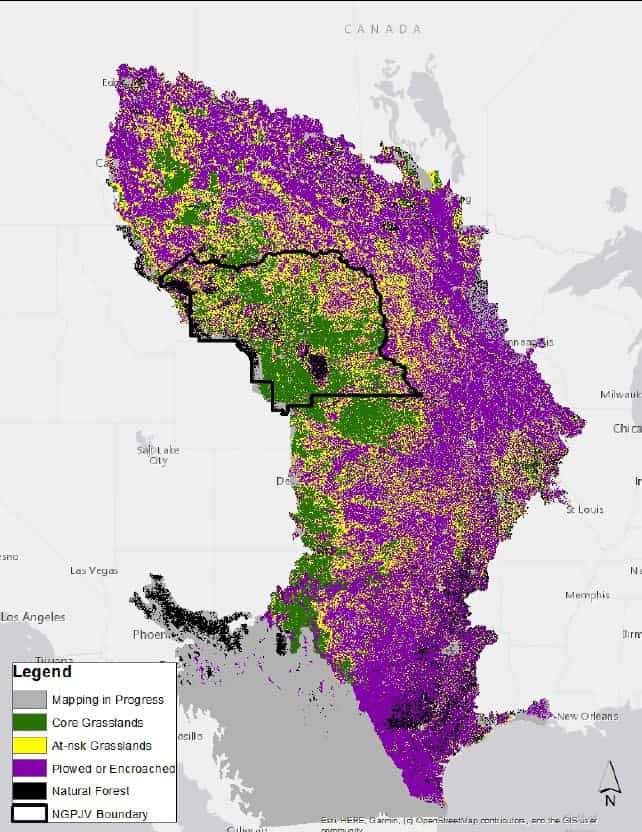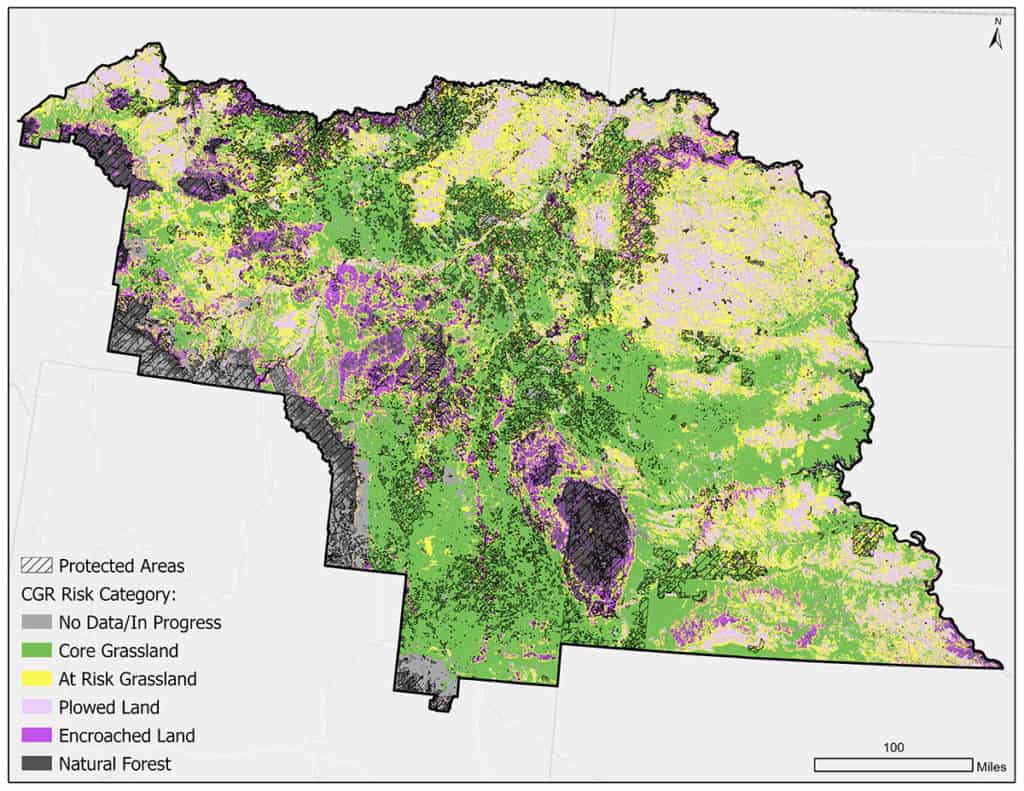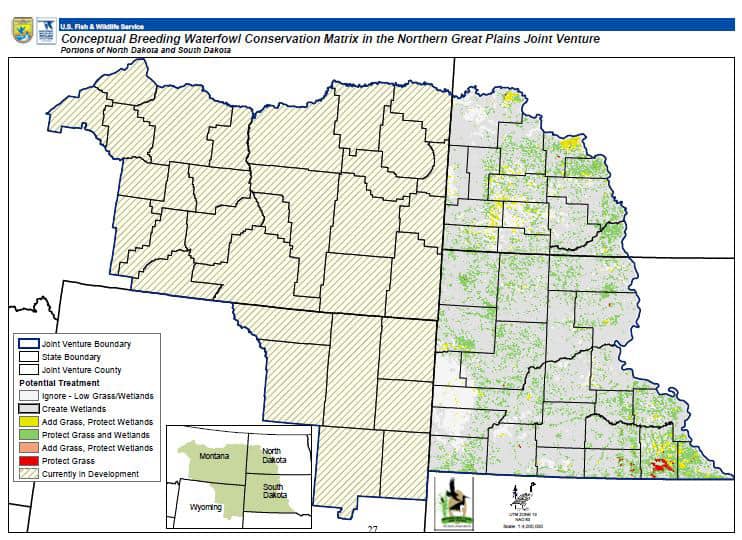Spatial Planning Tools

Grassland Assessment MAp
Spatial tools help guide our conservation actions to the places most likely to provide tangible conservation outcomes for birds and local partnerships. In addition to the NGPJV’s Conservation Guidance Web Tool, which is designed to help local producers and on-the-ground practitioners, NGPJV partners continue to develop and update science-based, spatially explicit maps that guide our work.
The Grasslands Assessment Map shows that 56% of the central grasslands biome has already been converted from grasslands to other uses or encroached by woody vegetation (e.g., eastern red cedar). Of the remaining grasslands, over half are considered at risk of conversion to cropland or woody encroachment. The NGPJV region occupies less than 15% of the biome but provides almost 40% of the intact core grasslands across the biome. It is ground zero for retaining, enhancing, and expanding grasslands for the benefit of birds, other wildlife, and people.
Other Tools
The USFWS Habitat and Population Evaluation Team developed several spatial planning tools for the NGPJV, including maps of grassland cover and priority areas in portions of the Joint Venture for waterfowl conservation based on wetland and grassland complexes. These types of maps can help target limited resources to areas with the highest conservation value and greatest return on investment.
Monitoring and Evaluation
Monitoring and assessment of bird populations and responses to landscape changes is an important component of effective conservation, and the NGPJV supports a diversity of local, regional, and continental monitoring programs. Data provided by these programs have been used in various models and analyses to understand which birds are most vulnerable, where bird numbers are declining, and where there may be opportunities for conservation. The NGPJV continues to work with our partners to better understand how conservation actions are directly and indirectly affecting bird populations.


